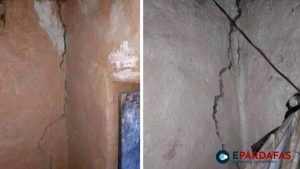
UNESCO adds three sites to ‘in danger’ list

The historic centre of the Ukrainian port city of Odesa and sites in Yemen and Lebanon were added to the World Heritage List Wednesday by the United Nations Educational, Scientific and Cultural Organization (UNESCO).
All three sites were simultaneously added to UNESCO’s List of World Heritage in Danger.
UNESCO’s founding Convention obliges all members — among whom are Russia and Ukraine — to “not take any deliberate measures that directly or indirectly damage their heritage or that of another State Party to the Convention.”
Audrey Azoulay, Director-General of UNESCO, said in a statement that he hoped the listing would help protect Odesa from the war.
“Odesa, a free city, a world city, a legendary port that has left its mark on cinema, literature and the arts, is thus placed under the reinforced protection of the international community,” Azoulay said.
“While the war continues, this inscription embodies our collective determination to ensure that this city, which has always surmounted global upheavals, is preserved from further destruction.”
The statement said that the decision would give Ukraine access to “technical and financial international assistance” to protect and rehabilitate the city centre.
The inscription was made during an extraordinary session of the World Heritage Committee in Paris.
The meeting addressed three threatened sites:
• Historic Center of Odesa (Ukraine)
• Rachid Karami International Fair-Tripoli (Lebanon)
• Landmarks of the Ancient Kingdom of Saba in Marib Governorate (Yemen)
All three are now listed on both the World Heritage List and the List of World Heritage in Danger.
In Yemen, the site includes seven archaeological sites that show the architectural, aesthetic and technological achievements of the Kingdom of Saba from the 1st millennium BCE to the arrival of Islam around 630 CE.
The site was added to the “in danger” list due to threats posed to the site by the ongoing conflict in Yemen.
The site in Lebanon, Rachid Karami International Fair in Tripoli, was designed in 1962 by the Brazilian architect Oscar Niemeyer. Its main building is a boomerang-shaped covered exhibition hall.
“It is one of the major representative works of 20th-century modern architecture in the Arab Near East,” UNESCO said in a news release.
It was added to the threatened list due to its “alarming state of conservation, the lack of financial resources for its maintenance, and the latent risk of development proposals that could affect the integrity of the complex,” UNESCO said. CNN











Comments